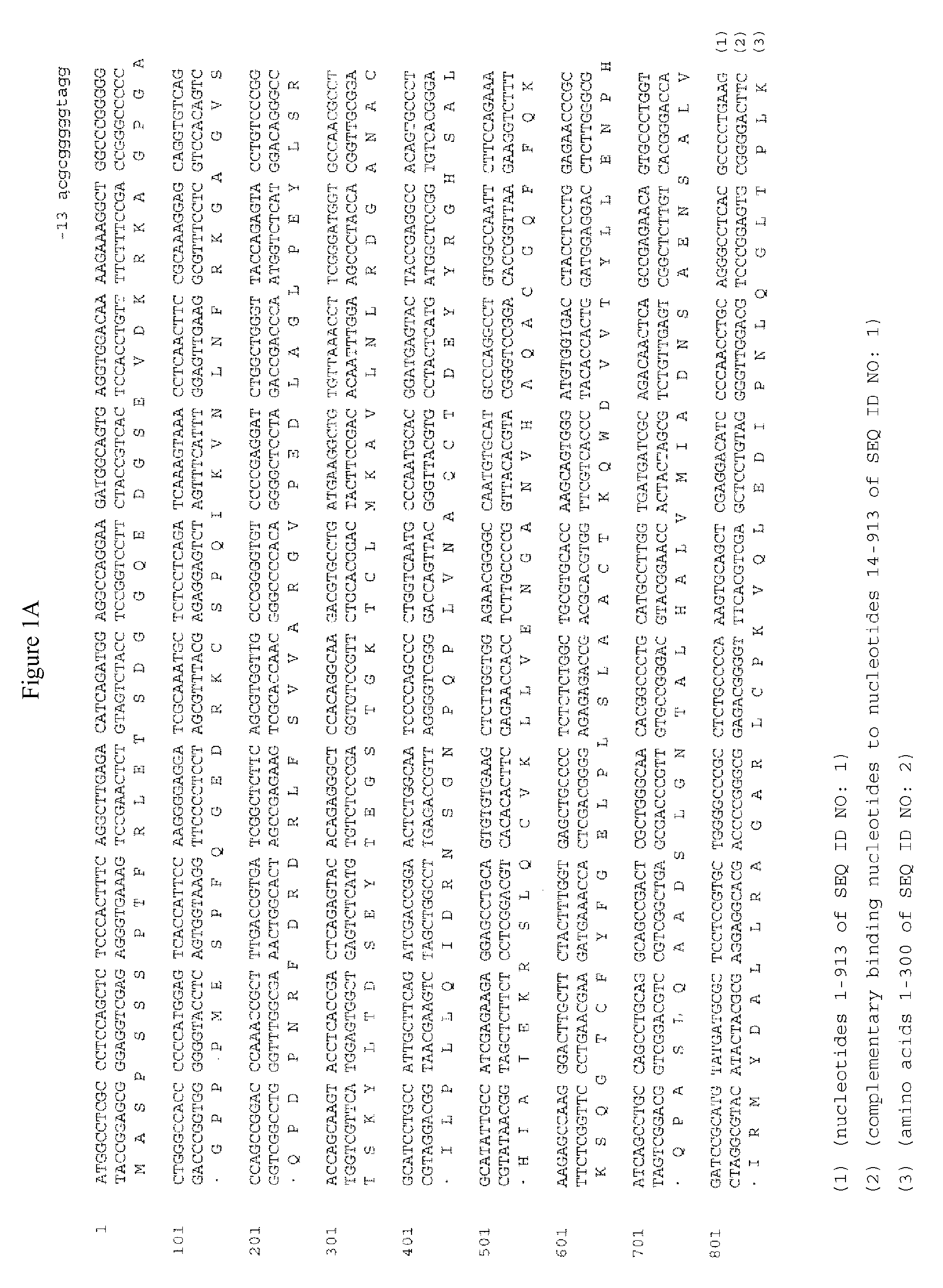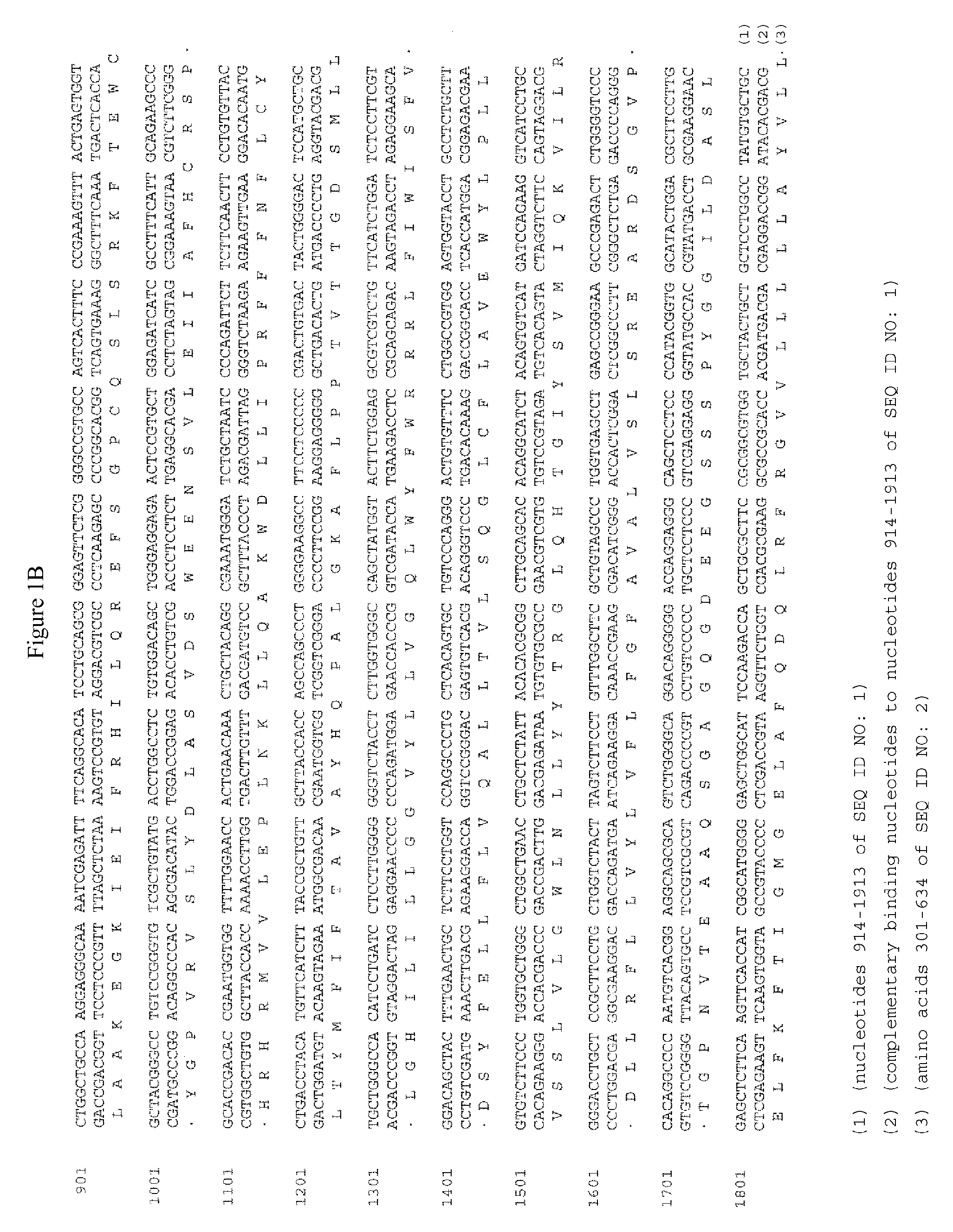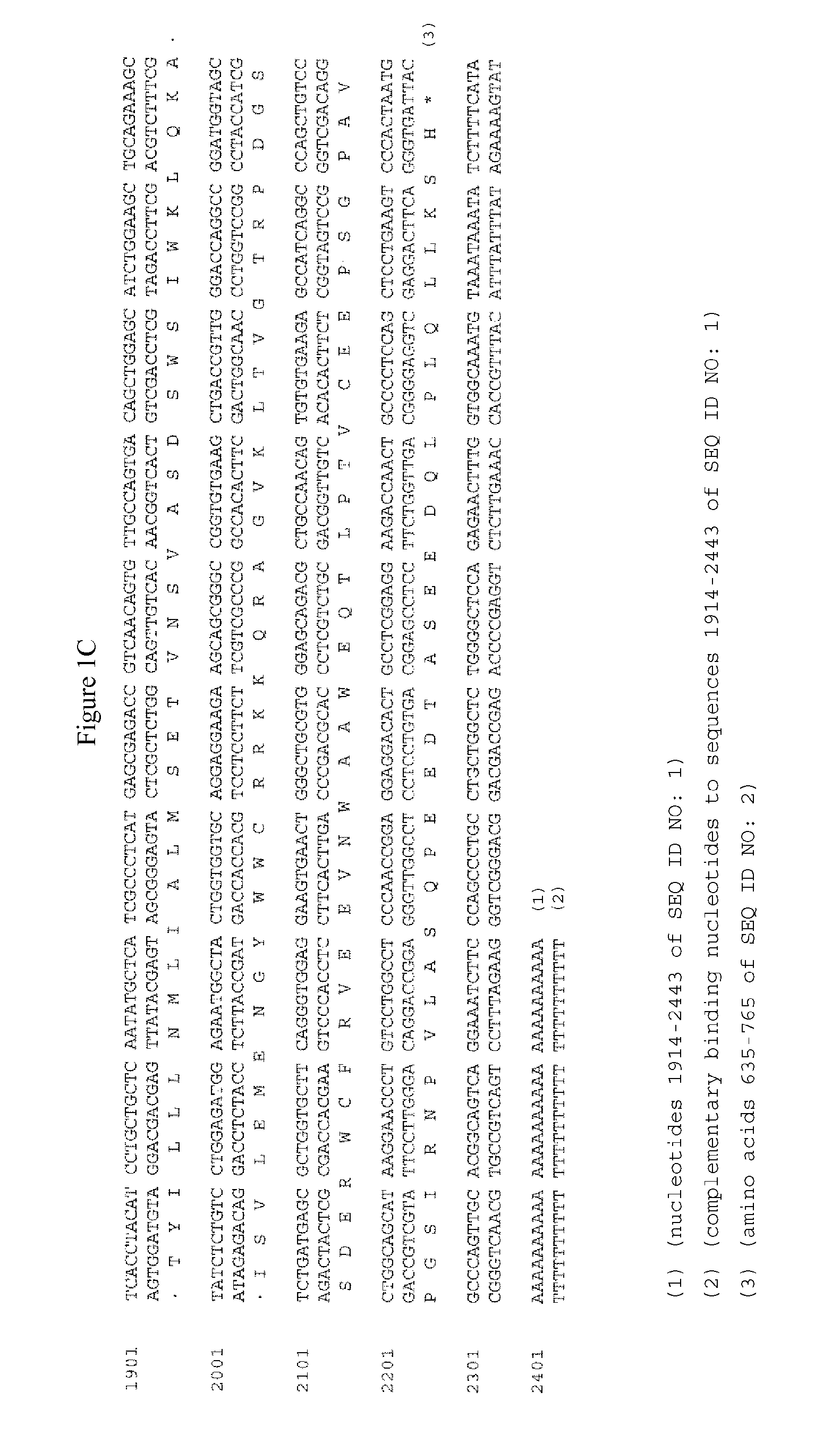Canine transient receptor potential V2 (cTRPV2) and methods of screening for TRPV2 channel modulators
a transient receptor potential and modulator technology, applied in the field of canine trpv2 (ctrpv2) channel, cloning of the channel, methods of screening for modulators of the trpv2 channel, can solve problems such as pain, and achieve the effect of high throughpu
- Summary
- Abstract
- Description
- Claims
- Application Information
AI Technical Summary
Benefits of technology
Problems solved by technology
Method used
Image
Examples
example 1
The present invention is directed to an isolation of a cDNA from canine dorsal root ganglion (DRG) tissue (SEQ ID NO: 1) encoding a full length TRPV2 (SEQ ID NO: 2), its preparation, characterization and functional expression, the establishment of a high throughput assay for testing the ability of compounds to alter the function of TRPV2 and the evaluation for the potential to decrease pain in animals and humans. In order to clone TRPV2 from canine, messenger RNA was first isolated from canine DRG, a reverse transcriptional PCR (RT-PCR) and a Rapid Amplification of cDNA End (RACE-PCR) technique were used. The cloning result revealed that the open reading frame cTRPV2 contains 2298 bp encoding a polypeptide of 765 amino acids and having a calculated molecular mass of 85.4 kDa. A Kyte-Doolitle hydrophilicity analysis of primary sequence predicts the presence of six putative hydrophobic domains clustered near the carboxyl terminus, which may form a pore of the ion channel. The nucleoti...
example 2
Recombinant Expression of cTRPV2
A. Cloning of Canine TRPV2 into a Mammalian Expression Vector
For expression of cTRPV2 in mammalian cell lines, the full-length cDNA of cTRPV2 was subcloned into pcDNA3.1 (neo) by performing a three-way ligation. First, the clone NQC881 was digested with NotI and XhoI to yield a 0.9 kb 5′ fragment, and the clone NQC918 was digested with XhoI and EcoRI to yield a 1.45 kb 3′ fragment. The 0.9 kb 5′ and 1.45 kb 3′ cTRPV2 fragments were purified and ligated with pcDNA3.1 that was predigested with NotI and EocRI, creating the expression construct cTRPV2 / pcDNA3.1.
B. Transient Transfection of Expression Construct into Mammalian Cells
The expression construct, cTRPV2 / pcDNA3.1 was then transfected into human embryonic kidney cells (HEK293, ATCC CRL-1573) with FuGene6 transfection reagent (Roche, Indianapolis, Ind.), according to the vendor's protocol. TRPV2-expressing HEK293 cells were cultured in DMEM supplemented with 10% fetal bovine serum, 100 units / ml penic...
example 3
Calcium Influx Functional Assay of cTRPV2
To demonstrate the functionality of the cTRPV2 gene, HEK293 cells were transiently transfected with plasmids encoding either cTRPV2 or vector control and then evaluated in a FLIPR assay to measure changes in intracellular calcium levels of the cells in each well upon addition of agonist. Transiently transfected cells were seeded in 384-well plates at a density of 1×104 cells / well and incubated overnight at 37° C. The following day, the cells were loaded with buffer and calcium dye, as recommended by the vendor (Molecular Devices, Sunnyvale, Calif.), in a final volume of 40 μl and incubated for 30 minutes at room temperature. The fluorescence intensity was measured by FLIPR before, during and after the addition of Δ9-THC, which was added to the cells at a final concentration of 100 μM. The results are shown in FIG. 6.
PUM
| Property | Measurement | Unit |
|---|---|---|
| temperature | aaaaa | aaaaa |
| molecular weight | aaaaa | aaaaa |
| molecular weight | aaaaa | aaaaa |
Abstract
Description
Claims
Application Information
 Login to View More
Login to View More - R&D
- Intellectual Property
- Life Sciences
- Materials
- Tech Scout
- Unparalleled Data Quality
- Higher Quality Content
- 60% Fewer Hallucinations
Browse by: Latest US Patents, China's latest patents, Technical Efficacy Thesaurus, Application Domain, Technology Topic, Popular Technical Reports.
© 2025 PatSnap. All rights reserved.Legal|Privacy policy|Modern Slavery Act Transparency Statement|Sitemap|About US| Contact US: help@patsnap.com



